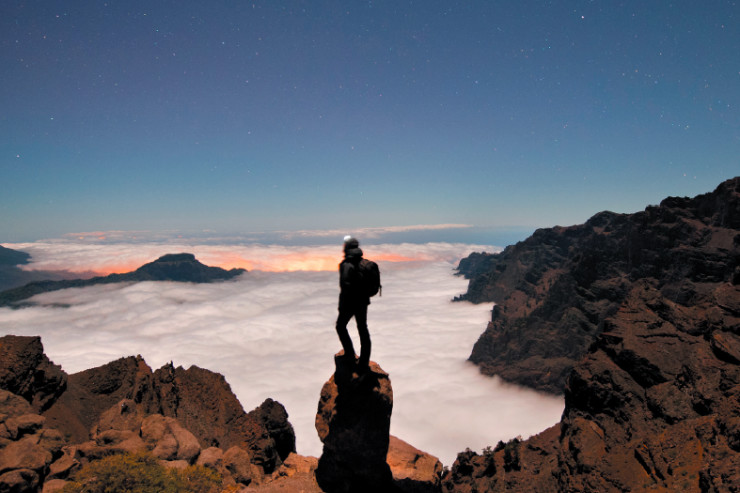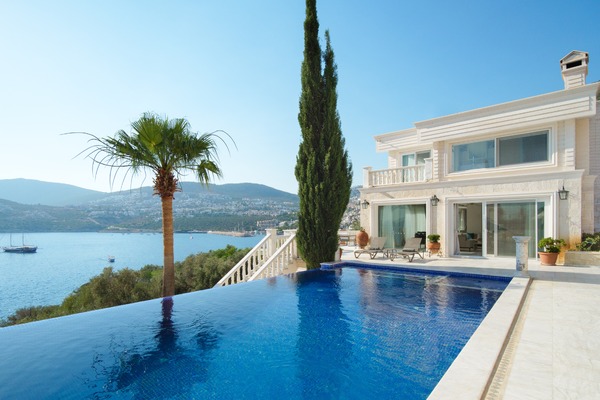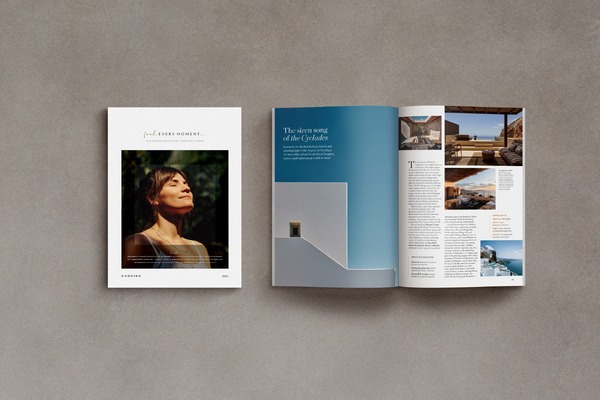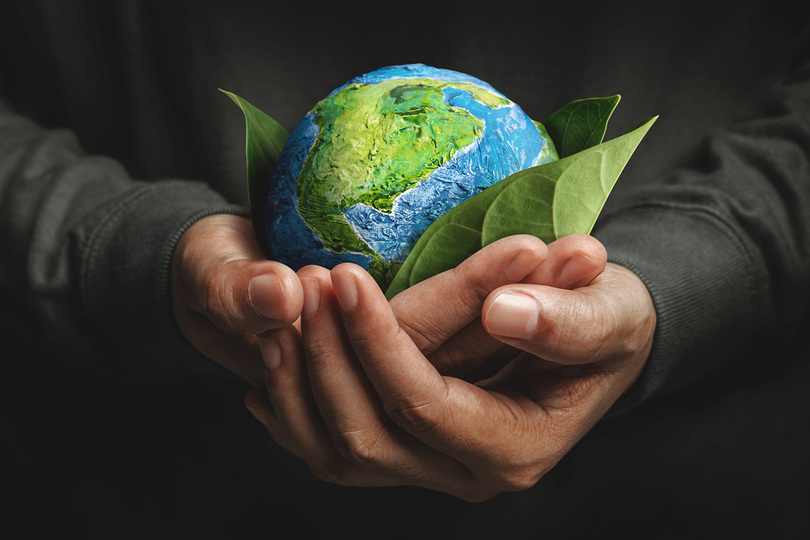Why La Palma is one of the world's best stargazing destinations
A stellar spot for stargazing, La Palma may be small but it delivers nature and adventure experiences to match far larger destinations. Claire Dodd explores the lesser-known Canary island.
La Palma is the one place on the whole earth with the least amount of wibble,” says Sheila Crosby, a guide at Roque de Los Muchachos Observatory, who is doing a marvellous job of making something very complicated sound oh-so-simple.
The observatory, perched at an altitude of 2,420 metres – or the height of Snowdon on top of Ben Nevis, as Sheila puts it – ranks as one of the three most important in the world. It’s earned the nickname Balcony to the Stars.
Up here, perched on the highest point of the island, the atmosphere is clear and stable, or free from “wibble”, thanks to the surrounding Atlantic. While astronomers work throughout the night, visitors are welcomed – weather permitting – in the morning, on pre-booked tours only.
“The Galileo, the Italian telescope here, shares the world record for seeing the most distant explosion ever. That was 13 thousand million light years away,” Sheila tells us, explaining why the skies above La Palma are an increasing draw for astro-tourists. “When there’s no moon, you can see about 3,000 stars with the naked eye."
Force of nature
With its clear air, strict light pollution laws and soaring peaks, La Palma is one of the best places on the planet to observe the night sky. Dubbed “the lesser-known Canary Island”, as well as “La Isla Bonita” (the pretty island), La Palma may be mere miles from its better-known neighbours, including Tenerife and Gran Canaria, but in every other sense it’s a world away.
This being the Canaries, the draw of good weather is a key selling point; with year-round sunshine, average temperatures sit in the low 20˚Cs. But although there are a number of large hotels on the island, including H10 Taburiente Playa and several Tui resorts, mass tourism has never really happened here.
For many, its undiscovered nature is the basis of its appeal.
Alicia Vanoostende, La Palma tourism councillor, says: “A number of features make La Palma worthy of its nickname, starting with its diverse landscapes where dense laurel forests exist alongside volcanoes covered in impressive pine forests.
“It offers a wide range of experiences such as local cuisine which is simple yet delicious and, above all, made from excellent produce. It has a rich and cherished history that can be seen in churches, historic buildings, or simply from passing through its towns and streets.”
The island’s historic cities such as capital Santa Cruz – which was a vital trading post between Spain and the Americas, with sugar cane exports making many merchants rich – are well worth exploring, but tourism here has primarily focused on the island’s natural assets.
Despite spanning about 270 square miles, La Palma is home to a diverse array of landscapes and micro-climates – from tropical rainforests to volcanic craters, black-sand beaches and sun-drenched banana plantations that dot the shoreline.
The entirety of La Palma was declared a Unesco biosphere reserve in 2002 and, as the world’s first Starlight Reserve, in 2012 the island was acknowledged as a Starlight Tourist Destination. More than a third of the island is protected land.
Walk this way
As I travel just a few miles from historic Santa Cruz, the island’s dramatic winding roads at times hug steep cliff tops, and at others ascend and descend dramatic canyons and craters. The skies will have to wait until nightfall. Right now, it’s time for a hike.
The island is an adventure junkie’s paradise, offering mountain biking, paragliding, diving and watersports galore. But I’m looking for a close-up view of what makes the island unique.
With more than 600 miles of clearly marked trails traversing the island, hikers are truly spoilt for choice. The most famous is perhaps the Volcano Route, a demanding 15-mile trail that scales numerous craters and passes through the Cumbre Vieja national park, traversing some of the oldest, prehistoric lava flows to the most recent.
Each May, the annual Transvulcania Ultramarathon follows this route. However, I’m heading for a path offering some of the most rewarding views, for a lot less effort.
It’s a gentle hike to the viewpoint overlooking the enormous Caldera de Taburiente – the largest erosion crater in the world at about five miles in diameter. Here the dense pine forests open up to a path that reaches like an outstretched hand to the edge of the crater. Save for birdsong, it’s silent, while the scent of pine permeates the crisp air of the national park.
Aiming for the sky
Up here the scenery is dramatically different. Though there are succulents everywhere, it’s the distinctive dragon trees – looming like oversized broccoli, some said to be more than 600 years old – for which the Las Buracas trail is rightly famous.
The path descends through rural gardens and past cave dwellings; a magnet for hippies who want to live off the grid, our guide tells us.
But it’s the enterprising locals who have stolen my attention. With €2 in my pocket, I knock on the door of the first house, where an elderly couple are selling sugared almonds grown in their garden. Further down the stone path, which follows the spine of the hillside to the sea, jewellery, plants and books are being sold in rustic little cabinets with honesty boxes alongside.
Further down, hikers can buy oranges, lemons and grapefruits – they just need small change, so suggest clients take cash if they’re hiking the north.
But with night closing in, there’s no time for a snack. You don’t have to be in La Palma for long before you spot curious signposts, pointed straight up at the open sky. Located at various altitudes and settings from remote woodland to village centres, the network of astronomical viewpoints allows visitors to explore the night sky independently, detailing which stars can be seen, depending on the time of year, making stargazing accessible for all.
Companies such as Cielos de La Palma offer escorted stargazing. But sadly for me, tonight is one of those rare nights with clouds. I head out to a viewpoint above Santa Cruz on the off chance, hoping to catch a glimpse. My patience pays off. As the wind carries part of the cloud cover away, there they are. Brilliant and beaming, a canopy of twinkling lights of alternating brightness emerges above. It’s humbling. If this is a bad night for stargazing, a good one must be truly spellbinding.
Better ways to sell La Palma
Smarter: Advise clients that the small car park serving the viewpoint to the Caldera de Taburiente allows permit-holding hikers just a one-hour stay. Permits can be booked a month in advance. Those unable to get one can take a taxi to the route.
Better: For a special occasion or more personalised experience, it’s possible to book a private tour of the observatory rather than joining a group. Prices start at €110.
Fairer: Dine at El Duende del Fuego in Los Llanos for locally sourced ingredients. Chef and owner Pedro Hernandez Castillo has created a menu catering for any diet – from gluten to dairy free – showcasing Canarian ingredients. Cactus risotto or dragon fruit sorbet, anyone?














